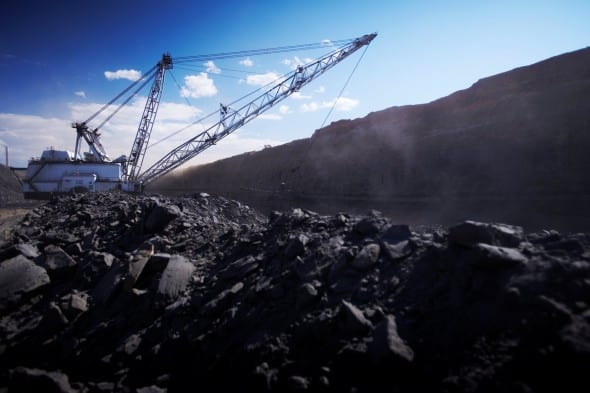BHP sure got a lot of headlines about its declaration this week that the world is plunging towards a climate catastrophe, and that it is determined to Do Something about it, starting with its supply chain.
Climate and clean energy activists gave it a round of applause. The conservatives and BHP’s industry peers said it was going too far; the climate deniers within the Coalition government accused it of drinking climate cool-aid to satisfy left-wing investors; and the minister for emissions reductions tried to pretend that he took the issue as seriously as BHP says it should.
But how good is it? BHP CEO Andrew Mackenzie has committed to spending $US400 million on low emission investments, and said that the company will put pressure on its supply chain to cut its emissions. As prime minister Scott Morrison would say: How good is that!
Well, let’s assume that it is a question rather than a statement. And two things come to mind.
First of all, it seems – on the face of it – passing strange that BHP should have blown $20 billion in the pursuit of a fracking business in the US, but only commit a fraction of that when confronted with what McKenzie describes as a “crisis” because “whole species” are at risk.
Secondly, we have actually been here before. As one reader pointed out, back in 2007 the then BHP CEO Chip Goodyear announced a $US300 million program to invest in low emissions technology and encourage emissions reductions among staff and customers.
And the ABC at the time asked the same question that we do now: “$AU350-million is still only a fraction of your net profit, something in the order of less than one-fifth of one per cent.” (It was actually two per cent, but the point stands). “It doesn’t seem to be a significant commitment to what is a significant issue.”
To which Goodyear replied: “It is four or five times what we would have spent otherwise in terms of this area. It is an area that is not necessarily focussed on financial return ultimately, that’s what we’re in business for, creating financial return over the long-term.”
So there you have it. It’s not about financial returns.
The company accepted the science, knew the world would be stuffed if it didn’t do anything about it, but because this was about the environment and not making money, pushing deeper into the petty cash tin was about as good as it got.
That, sadly, pretty much sums up the attitude to climate change of most of big business, and particularly the mining world. In Australia, it has given Coalition governments the oxygen to peddle a ridiculous scare campaign that they use as justification for doing nothing.
That interview is remarkable for the talking points that Goodyear used: That there are no obvious alternatives to burning coal, that CCS would arrive, some time, and that Australia only contributed 1.4 per cent to global emissions. The denialist lobby are still trotting out the same.
Goodyear even said that BHP was not opposed to a carbon price. The company said later and still says that it supports a price on carbon. But when Australia did have a price on carbon, BHP was one of those companies urging the Coalition government to scrap it. So now we don’t have a price on carbon, and it is virtually unimaginable in the current political environment that we ever will.
So, how excited should we be about BHP’s new positioning?
First of all, it is gratifying that BHP now accepts the gravity of the situation. As Mackenzie said in his speech: “The evidence is abundant: global warming is indisputable. The planet will survive. Many species may not.”
Many governments, and too many conservatives, Australia’s included, still have their head in the sand. They seriously believe climate science is part of some global conspiracy. (Writer’s declaration: I’m not a lizard sent from outer space, I checked this morning.)
Second, it is hugely significant that BHP is giving notice to its supply chain. This has happened in many industries, but not so much in the mining sector. BHP won’t actually set targets for its suppliers, but its suppliers will know that having low emissions products will play a key role in their ability to land contracts.
Thirdly, BHP’s money may come in useful, but Mackenzie may have to get himself more informed about renewables, and their potential, and rid himself of some silly myths, particularly around land use, if that money is to go to places that it should.
RenewEconomy understands that much of the budget is aimed at carbon capture and storage – still the fallback for major coal producers like BHP. It will also go to lower emissions transport and shipping of commodities, and there was a big team from BHP at the recent Energy and Mines conference in Perth thinking about exactly those things.
It will also look at alternative pathways to processing minerals. This could mean new technologies for processes such as steel making, and it has made an interesting announcement on that with Mitsubishi.
But that should also mean renewables. As Element25 outlined, it thought the smartest thing to do was to power its proposed mine in the Pilbara with renewables, and use that cheap and clean energy to deliver higher-value low- emissions products, such as manganese metal, rather than shipping the ore out to another country and buying back the metal.
Decarbonising the electricity supply should be the greatest priority, as Mackenzie admits. The company’s flagship resource, the huge Olympic Dam project in South Australia, is in a state that is heading towards “net” 100 per cent renewables by 2030, with the enthusiastic support of the state’s Liberal government.
See South Australia’s stunning aim to be “net” 100 per cent renewables by 2030.
That means wind and solar, backed up by storage. It will underpin the expansion of the Whyalla steelworks and many other industries. BHP should take the hint.










